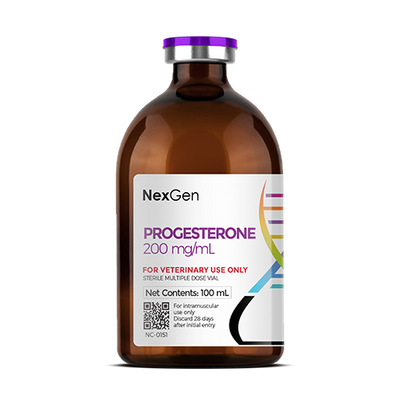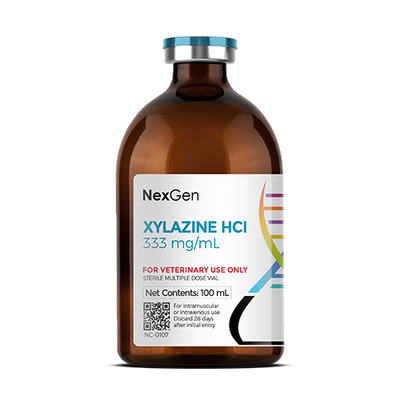
Sarraceniaceae (Sarracenia/Pitcher Plant) 0.5 mg/mL, Injectable, (100mL)
Login for pricing
- Brand
- Mixlab
- SKU:
- NC-0065
- Product Type:
- Injectable
- Size:
- 100ml
- Administration:
- Intramuscular
Muscle discomfort and pain as a cause of lameness and poor performance in the horse is often poorly recognized. While human athletes are readily ably to convey discomfort and pain to physicians, this is obviously not the case with horses, whose muscle injuries often go documented as a cause of lameness. Lameness in the horse is usually characterized by the resulting gait abnormalities.1 Other muscle problems (stress tetany, synchronous diaphragmatic flutter, exhaustion, post exercise fatigue, tying-up and azoturia) are regarded as specific physiologic disturbances.2 Since muscle injuries typically cause pain and poor performance in human athletes and racing dogs, it should be surmised that similar injuries should be expected in the horse.
There are numerous factors that can lead to muscle strain, including cold temperatures, impaired circulation, muscle fatigue, insufficient training or insufficient warm-up.1 As many human athletes can attest, cold increases muscle tension and can lead to circulatory problems. Performing in the cold can cause early muscle fatigue, which can give rise to incoordination and muscle strain.
The Mechanics of Muscle Fatigue
A variety of problems can contribute to muscle pain in horses, which is broken down into two types:
Primary muscle soreness will usually present itself quite dramatically. Symptoms can include muscle stiffness, sweating, reluctance to move, violent tremors, tucked-up abdomen, or even collapse. Primary muscle problems are often due to an improper function of muscle metabolism, sometimes linked to a genetic component. Primary muscle soreness can be due to a muscle condition such as Polysaccharide Storage Myopathy (PSSM) Type 1 or 2, or Equine Hyperkalemic Periodic Paralysis (HYPP).
Secondary muscle soreness can stem from improperly-fitting equipment, foot soreness or arthritis. Symptoms can be seen in behavioral changes such as a reluctance to go forward, bucking, tail swishing, and changes in overall demeanor. While secondary muscle pain is more common than primary, it can be frustrating to diagnose its exact cause. The multitude of contributing factors include, but are not limited to: poor fitness, dietary deficiencies, improper saddle fit, shoeing problems, or altered movement due to joint pain.3
When muscles are fatigued, they decrease in performance and elasticity, increasing the likelihood of muscle strain. When forced to continue performing under such strain, feedback results in central nervous system incoordination, increasing the likelihood of strain and injury even further.4 An insufficient warm-up of muscles prior to exercise often results in poor circulation during activity and lowered capacity to eliminate muscle waste products. Both of these decrease the muscle’s ability to deliver maximal performance and increase the chances for injury.
As one may have surmised, equine athletes and work horses are exposed to these predisposing factors on a regular basis. Thus, crafting training regimens that progressively increase the workload with a mind toward acclimatizing the horse to the strain gradually is of utmost importance.
Diagnosing and Treating Muscle Strain in the Horse
Often, it is difficult for the veterinarian to definitively diagnose muscle strain or soreness as the cause of lameness. With human athletes, generally the athlete’s description of the pain and its location are the single most important factors in diagnosis—a diagnostic aid that is absent in veterinary medicine. Many of these cases probably go undiagnosed in equine medicine because they cannot be confirmed by commonly used diagnostic methods such as radiographs and nerve blocks.3 Consequently, many cases of lameness are most treated with various combinations of rest, analgesics, and anti-inflammatory agents.
Due to the often unwelcome side effects of some medications and long-term NSAID use and the rising popularity of natural remedies and homeopathics, an increasing number of veterinarians, horse owners and managers have adopted the use of alternative therapies. "Some alternative therapies that are often suggested include massage therapy, acupuncture, chiropractic adjustment, magnetic blankets, or extracorporeal shock wave therapy."2
Among these are Sarracenia (Sarracenia purpurea), or the North American Pitcher Plant. Sarracenia is a carnivorous plant whose aqueous extracts have been proposed to exert analgesic effects by neurolytical action on peripheral nerves. There are several species of pitcher plants, which are similar to the Venus fly trap in their feeding modalities. Though carnivorous, pitcher plants are beneficial to insect species. Ants, wasps, bees, butterflies, and moths are attracted to the pitcher plant by its nectar. Beetles and spiders visit the plants to prey on other insects. Spiders also spin their webs inside the pitcher plant to catch insects which fall inside.5
Distillates of the pitcher plant have long been used in human and veterinary medicine for local analgesia. Pitcher plant derivatives contain tannins and other chemicals that are thought to help with some digestive tract problems and pain sensation. The mechanism of the reported analgesic response is unknown; however, the agent is purported to provide more effective analgesia for slow, chronic pain than for sharp, acute pain.6
Sarracenia's aqueous extracts have been proposed to exert analgesic effects by neurolytical action on peripheral nerves. Studies have shown that sarracenia is can be very helpful in the temporary relief of symptoms associated with neurologic pain in horses.
Sarapin® injection for horses is a branded analgesic derived from the Pitcher Plant; it is indicated for the management of muscular or neuropathic pain that may be treated by local infiltration or nerve block. Consequently, Sarracenia / Pitcher plant derivatives are often sold as a generic form of sarapin or a sarapin alternative. Similarly, P-Bloc® is a branded injectable also derived from the Pitcher Plant.
Where to buy Sarracenia / Pitcher Plant
FOR RX ONLY: A valid prescription from a licensed veterinarian is required for dispensing this medication.
1Turner TA. Hindlimb muscle strain as a cause of lameness in horses. Proceedings Am Assn Equine Practioners 1989;34:281-286.
2Hodgson DR. Myopathies in the athletic horse. Compend Contin Educ Pract Vet 1985;7:s551-s555.
3McDonald, J., Muscle soreness in horses – how to recognize and treat it. Equine Wellness, Sept. 2018.
4Turner TA. Diagnostic thermography. Vet Clin North Am Equine Pract 2001;17:95-114.
5Lloyd, F. E. 1942. The carnivorous plants. Waltham, MA: Chronica Botanica Company. 352 p. [12247].
6Campos, G., et. al. Evaluation of the Local Analgesic Effects of a Commercial Aqueous Extract of Sarracenia purpurea and Ammonium Sulfate in the Equine Abaxial Sesamoid Block Model. Journal of Equine Veterinary Science, Volume 33, Issue 11, 2013, Pages 1004-1007.




















